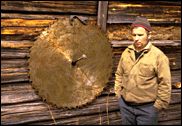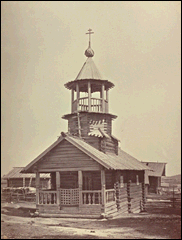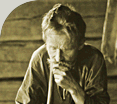 |
| Main page | Background | Villages | Revitalisation | Cultural tourism | Map | |
Jyvöälahti |
Jyvöälahti What to see |
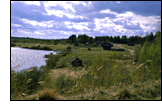 While
most of the poetry collectors from Sjögren and Lönnrot on
visited Jyvöälahti, the village's place in the cultural
history of the region was perhaps best ensured by the photographer
I.K. Inha. Inha and his companion, the linguist Kusti Karjalainen,
used the village as their base during the several months they spent
in Viena in 1894. It was from here that they set out to explore other
villages. Inha took more photographs in Jyvöälahti than
in any other village. For example, he staged a wedding there, and
the series of photographs he took and the account written by K.F.
Karjalainen are irreplaceable sources of information for researchers
interested in wedding traditions in Viena. While
most of the poetry collectors from Sjögren and Lönnrot on
visited Jyvöälahti, the village's place in the cultural
history of the region was perhaps best ensured by the photographer
I.K. Inha. Inha and his companion, the linguist Kusti Karjalainen,
used the village as their base during the several months they spent
in Viena in 1894. It was from here that they set out to explore other
villages. Inha took more photographs in Jyvöälahti than
in any other village. For example, he staged a wedding there, and
the series of photographs he took and the account written by K.F.
Karjalainen are irreplaceable sources of information for researchers
interested in wedding traditions in Viena.
Lönnrot's descriptions of Jyvöälahti are rather scanty. On the last two of his field trips he mentions it only as a stop on the way, and his first visit certainly failed to impress him:
Castrén also visited Jyvöälahti, in 1839, but collected just as little material as the others.
Juvelius (1886) and Sparre and Wikström (1892) visited Jyvöälahti before Inha and Karjalainen did but were unimpressed, although they did comment on how friendly and tidy the people were:
The church is gone but the tšasouna (Orthodox chapel) in present-day Jyvöälahti is extremely interesting, for it is the only one in Viena that has been preserved at least in some measure. Unfortunately, decades of use as a residence have left its mark. Restoration work is scheduled for the turn of the millennium if funding can be secured. Another very interesting building in Jyvöälahti is a well-reserved granary which differs in shape and height from other granaries in Viena. Today Jyvöälahti is significant among the larger villages in Viena for having best preserved its houses and village profile. The village was at its largest in the late 1930, when it had over 70 houses.
|
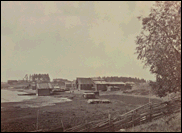
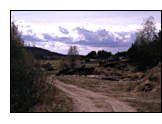 His
account on the return journey is even more terse:
His
account on the return journey is even more terse: